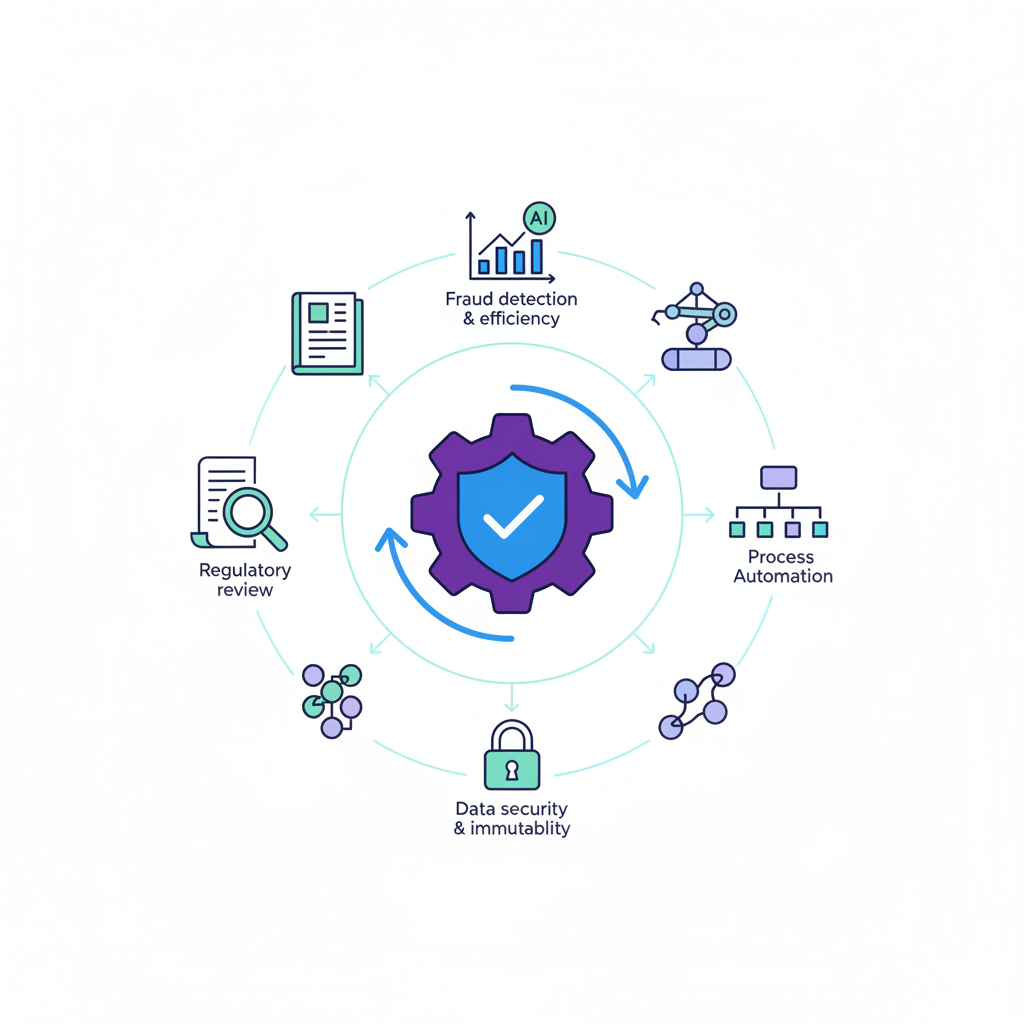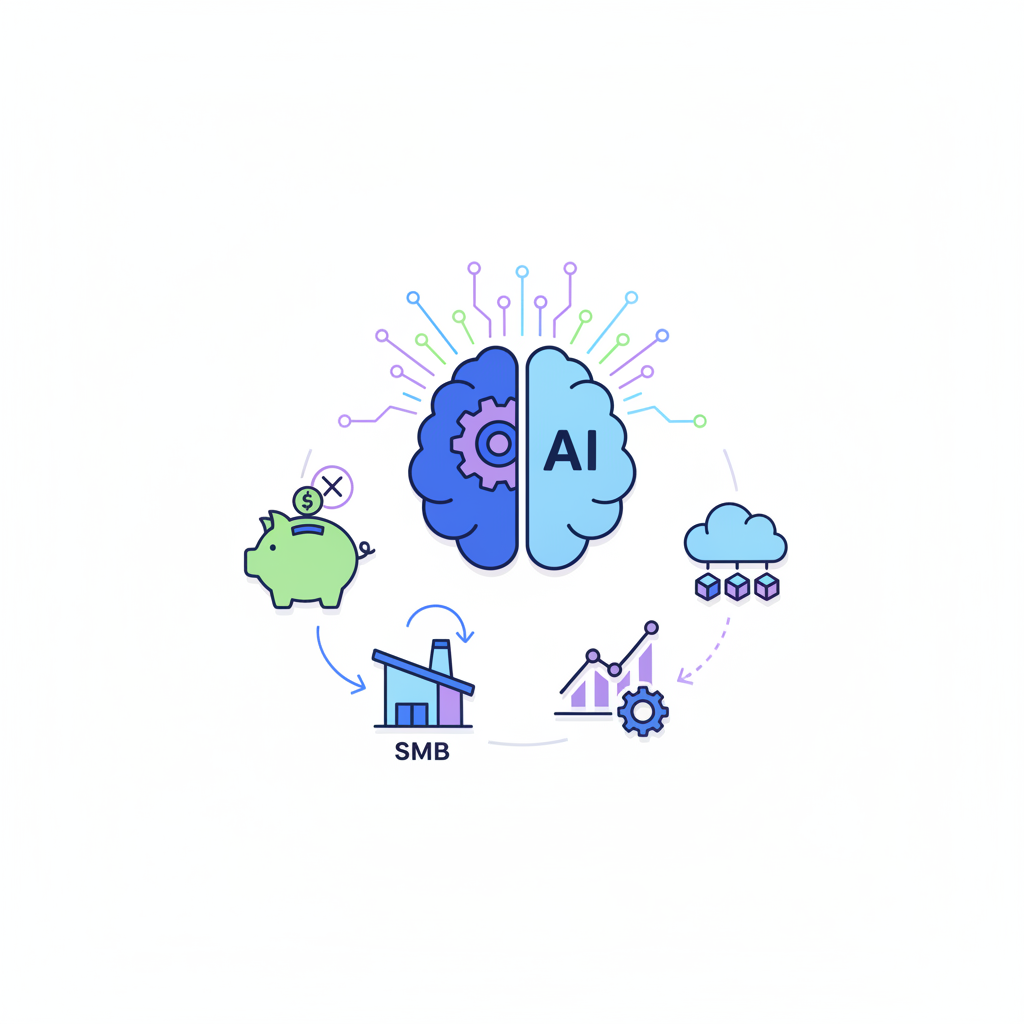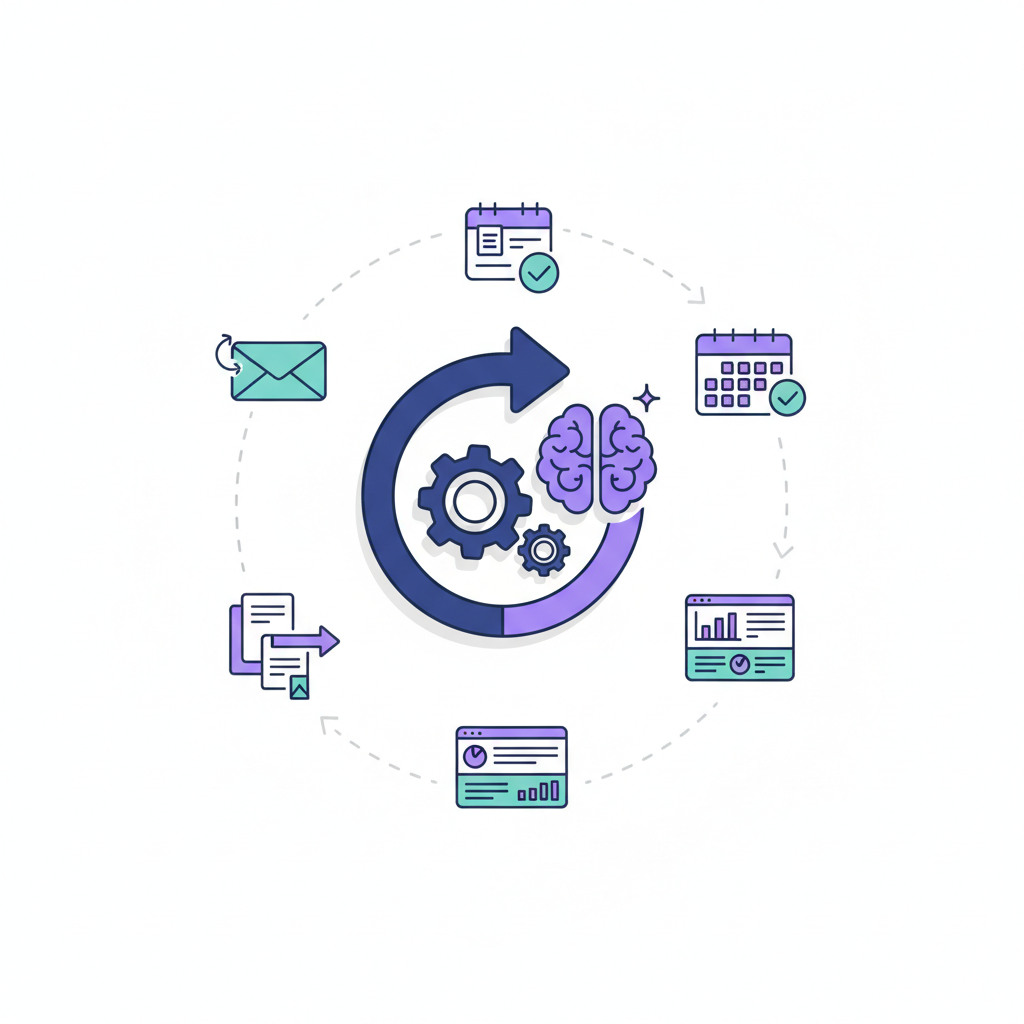Top 10 AI Tools for Automation Testing
Discover the top 10 AI tools for automation testing in 2025, including Testim, Applitools, mabl, Katalon Studio, UiPath Test Suite, Tricentis Tosca, Functionize, Testsigma, Perfecto, and Smartbear TestComplete. Learn how AI enables self-healing, visual testing, and test generation.
Revolutionizing QA: Why AI Tools are Essential for Automation Testing
The landscape of software development is evolving at an unprecedented pace, marked by increasing application complexity, diverse user interfaces, and an insatiable demand for faster, more frequent releases. In this high-pressure environment, traditional automation testing methods are often stretched to their limits, struggling with persistent challenges such as high maintenance costs, flaky test results, and difficulties in scaling to meet growing project demands. QA teams and DevOps teams find themselves in a constant battle against these inefficiencies, which can slow down development cycles and compromise software quality.
Enter AI tools for automation testing – a transformative solution poised to redefine how we approach quality assurance. By integrating artificial intelligence and machine learning capabilities, these innovative tools offer a game-changing approach, promising smarter, faster, and significantly more resilient testing processes. They move beyond simple script execution, introducing intelligence that can adapt, learn, and even predict, thereby dramatically reducing manual effort and improving accuracy. This article will delve into the core concepts of AI in testing, explore the top 10 AI tools for automation testing available today, provide a comparative analysis, and discuss future trends, equipping you with the knowledge to embark on a truly smarter testing journey.
Understanding AI in Automation Testing: Beyond the Buzzwords
AI in testing is not merely a buzzword; it represents a fundamental shift from rigid, script-based automation to intelligent, adaptive quality assurance. Unlike traditional automation, which relies on predefined rules and explicit instructions, AI test automation tools leverage algorithms to learn from data, identify patterns, and make decisions, enabling a more dynamic and robust testing process. This intelligence helps QA teams create less flaky automation tests and significantly eliminate maintenance overhead.
Key AI Applications and Mechanisms in Automation Testing:
- Self-Healing Scripts: One of the most celebrated AI capabilities, self-healing scripts automatically adapt tests to minor UI changes (e.g., altered element locators). When an element's ID or XPath changes, AI algorithms can intelligently locate the new element based on its visual appearance, surrounding context, or attributes, preventing broken tests and drastically reducing test maintenance efforts. This ensures a smoother, more continuous codeless test automation journey for many teams.
- Visual AI/Computer Vision: This technology allows AI to "see" and understand applications like a human user. Visual AI detects UI discrepancies, validates visual elements, and ensures pixel-perfect rendering across different browsers and devices. It can identify layout issues, font inconsistencies, and missing elements that traditional automation might miss, enhancing the user experience.
- Test Case Generation: Leveraging Natural Language Processing (NLP) and Machine Learning (ML), AI-powered tools can analyze requirements, user stories, or existing application data to automatically generate new, relevant test cases. This accelerates test creation, improves test coverage, and uncovers scenarios that might be overlooked by human testers.
- Anomaly Detection & Predictive Analytics (Machine Learning): AI algorithms can analyze historical test data, logs, and performance metrics to identify unusual patterns or predict potential defects early in the development cycle. This predictive analytics capability helps in proactively addressing issues, prioritizing tests, and focusing resources where they are most needed, leading to more stable software.
- Smart Test Prioritization: Based on factors like code changes, risk assessment, and historical defect data, AI can intelligently prioritize test execution. This ensures that the most critical or high-risk tests are run first, optimizing test cycles and providing faster feedback to developers.
- Data-Driven Testing: AI excels at analyzing large datasets to identify optimal test data, generate synthetic data, or even infer complex data relationships to create more effective and comprehensive tests, ensuring broader coverage and deeper insights.
These applications collectively empower teams to fix broken tests automatically, reduce manual intervention, and achieve unprecedented levels of efficiency and reliability in their testing efforts.
Top 10 AI Tools for Automation Testing in 2024-2025
The market for AI tools for automation testing is rapidly expanding, offering a diverse range of solutions tailored to various needs, from no-code testing platforms to highly customizable, code-centric frameworks. These AI test automation tools are designed to address the common pain points of traditional testing, helping teams fix broken tests automatically and create less flaky automation tests. Here's a deep dive into the best AI test automation tools for 2024-2025.
Testim
Overview: Testim is a leading AI-powered test automation platform that focuses on stability and speed. It's designed to help teams create, execute, and maintain end-to-end UI tests with remarkable efficiency. Testim is particularly popular for its ability to handle dynamic web applications and complex user interfaces, making it a strong contender for modern web development teams.
Specific AI Capabilities: Testim's core strength lies in its AI-powered smart locators and self-healing capabilities. Its AI engine learns from changes in the UI and automatically updates test steps when elements shift, preventing tests from breaking. It uses a combination of visual recognition, DOM analysis, and machine learning to identify elements reliably, significantly reducing test maintenance.
Key Features: Codeless test creation, JavaScript-based coding for advanced scenarios, cross-browser testing, parallel execution, robust reporting, and seamless integration with CI/CD pipelines and popular development tools. It also offers a visual editor for easy test flow visualization.
Pros: Exceptional self-healing capabilities that fix broken tests automatically, leading to highly stable and less flaky automation tests. Fast test execution, strong enterprise-grade features, and a hybrid approach supporting both codeless and coded automation.
Cons: Can be relatively expensive for smaller teams. The learning curve for advanced customization might be steeper for non-developers.
Pricing Model: Offers a free trial, with pricing typically based on usage (e.g., number of test runs, parallel executions) and enterprise-level subscriptions.
Ideal Use Case: Mid-to-large enterprises with complex web applications requiring highly stable, scalable, and maintainable end-to-end UI automation. Teams looking for a blend of codeless and code-based flexibility.
Applitools
Overview: Applitools specializes in Visual AI testing, ensuring the visual correctness and responsiveness of applications across various browsers, devices, and resolutions. It's not just about functional testing; it's about guaranteeing a perfect user experience by catching visual bugs that traditional tools often miss.
Specific AI Capabilities: Applitools' Eyes platform uses a sophisticated Visual AI engine (Ultrafast Grid) that mimics the human eye and brain. It can detect subtle visual differences, layout shifts, content changes, and rendering issues, distinguishing between intentional changes and actual bugs. Its AI can ignore dynamic content (like ads or timestamps) to prevent false positives.
Key Features: AI-powered visual validation, cross-browser and cross-device testing, root cause analysis, automatic baseline management, integration with popular test frameworks (Selenium, Cypress, Playwright), and comprehensive reporting.
Pros: Unparalleled accuracy in visual testing, significantly reduces the time spent on manual visual validation. Helps create less flaky automation tests by focusing on visual stability, and can be integrated into existing automation frameworks.
Cons: Primarily focused on visual testing, so it needs to be complemented by other functional automation tools. Can be a premium solution in terms of cost.
Pricing Model: Offers a free tier for small projects, with paid plans based on the number of visual checks and team size, scaling up to enterprise solutions.
Ideal Use Case: Teams where UI/UX is paramount, such as e-commerce, banking, or media companies. Excellent for ensuring brand consistency and pixel-perfect rendering across diverse environments.
mabl
Overview: mabl is a low-code/no-code test automation platform that leverages AI to simplify the entire testing lifecycle. It's designed for speed and ease of use, enabling anyone on the team, regardless of coding expertise, to create robust and reliable tests. mabl aims to integrate testing seamlessly into the CI/CD pipeline.
Specific AI Capabilities: mabl incorporates AI for several functions: auto-healing of tests, automatic test generation (discovering new paths and scenarios), anomaly detection in application behavior, and intelligent waiting for page elements. Its "auto-heal" feature automatically adjusts tests when UI elements change, ensuring tests don't break.
Key Features: Low-code/no-code test creation, unified platform for UI, API, and accessibility testing, cross-browser testing, parallel execution, integrated performance testing, comprehensive reporting, and native CI/CD integrations.
Pros: Extremely user-friendly, making it an excellent AI-powered no-code test automation tool. Its AI capabilities help fix broken tests automatically and create less flaky automation tests, significantly reducing maintenance. Fast setup and execution.
Cons: While powerful, it might offer less granular control for highly complex, custom-coded scenarios compared to purely code-based frameworks.
Pricing Model: Offers a free trial, with subscription plans based on the number of users, test runs, and features, catering to small teams up to large enterprises.
Ideal Use Case: Teams adopting a shift-left approach, seeking a unified platform for web, mobile, and API testing, and preferring a plain English, scriptless approach for a seamless codeless test automation journey.
Katalon Studio
Overview: Katalon Studio is a comprehensive, all-in-one test automation solution that supports web, API, mobile, and desktop applications. It combines a user-friendly interface with powerful scripting capabilities, making it accessible to both beginners and experienced automation engineers. Katalon has steadily integrated AI features to enhance its offerings.
Specific AI Capabilities: Katalon incorporates AI for smart test object recognition and self-healing. Its "Smart Wait" feature uses AI to intelligently wait for page elements to load, reducing flakiness. The self-healing mechanism automatically suggests alternative locators when a primary one fails, helping to fix broken tests automatically.
Key Features: Low-code/no-code options, built-in keywords, record-and-playback, BDD support, extensive integrations (Jira, Jenkins, Git), cross-browser and cross-platform execution, and robust reporting.
Pros: Versatile and supports multiple application types. Good balance between ease of use and advanced scripting. Its AI features contribute to creating less flaky automation tests and reducing maintenance.
Cons: Can be resource-intensive. While it offers AI features, they might not be as deeply integrated or advanced as some specialized AI-first platforms.
Pricing Model: Offers a free version for basic use, with paid enterprise editions that unlock advanced features, AI capabilities, and dedicated support.
Ideal Use Case: Teams looking for a versatile, all-in-one solution for various testing needs (web, mobile, API) that offers both codeless and code-based options, with growing AI enhancements.
UiPath Test Suite
Overview: UiPath, a leader in Robotic Process Automation (RPA), has extended its capabilities into testing with the UiPath Test Suite. This platform leverages RPA principles and AI to automate testing across a wide range of applications, including enterprise systems, legacy applications, and modern web apps.
Specific AI Capabilities: UiPath Test Suite utilizes AI for intelligent object recognition, which is crucial for automating tests on complex and dynamic UIs. Its AI Computer Vision allows it to interact with applications at a visual level, making it highly effective for testing virtualized environments or applications without accessible DOM structures. It also offers AI-powered test data generation.
Key Features: End-to-end testing for enterprise applications, RPA-driven test automation, visual testing, test data management, integration with popular ALM tools (e.g., SAP Solution Manager, Jira), and comprehensive reporting.
Pros: Excellent for testing complex enterprise applications, including those with legacy interfaces or virtual desktops. Its AI Computer Vision is powerful for challenging UIs. Helps fix broken tests automatically in complex environments.
Cons: Can have a steeper learning curve for those unfamiliar with RPA concepts. The cost can be a consideration for smaller teams.
Pricing Model: Enterprise-focused, with licensing typically based on robots, users, and specific product modules. Offers trials and custom quotes.
Ideal Use Case: Large enterprises with diverse application portfolios, particularly those with significant investments in RPA or a need to automate testing for legacy systems, virtualized environments, and complex business processes.
Tricentis Tosca
Overview: Tricentis Tosca is an enterprise-grade, model-based test automation tool known for its comprehensive capabilities in continuous testing. It emphasizes a codeless approach, allowing business users and QA professionals to create and maintain tests efficiently. Tosca is particularly strong in managing complex test data and integrating into enterprise ecosystems.
Specific AI Capabilities: Tosca incorporates AI for intelligent test case design, risk-based testing, and self-healing capabilities. Its AI engine analyzes application changes and automatically updates test assets, reducing maintenance. It uses AI to optimize test sets, ensuring maximum coverage with minimal tests, and can identify critical business paths.
Key Features: Model-based test automation, codeless scripting, risk-based test design, test data management, API testing, performance testing, extensive integrations with enterprise tools (SAP, Salesforce, ServiceNow), and distributed execution.
Pros: Highly scalable and robust for enterprise environments. Its codeless approach and AI-driven maintenance significantly reduce the effort to fix broken tests automatically. Excellent for complex, data-intensive applications.
Cons: Can be a significant investment, both in terms of licensing and initial setup/training. The learning curve can be steep due to its extensive feature set.
Pricing Model: Enterprise licensing, typically based on user seats, modules, and usage. Offers custom quotes and proof-of-concept engagements.
Ideal Use Case: Large enterprises with complex, mission-critical applications (especially SAP, Salesforce) that require highly scalable, resilient, and maintainable test automation with a strong emphasis on risk-based testing and a codeless test automation journey.
Functionize
Overview: Functionize is an AI-powered test automation platform that aims to eliminate test maintenance and accelerate test creation through its "Adaptive Machine Learning" engine. It's designed to be self-learning and self-healing, providing a highly resilient automation solution for web applications.
Specific AI Capabilities: Functionize's core is its "Autonomous Testing" engine, which uses AI to understand the application's behavior. It automatically generates tests, self-heals broken tests by adapting to UI changes, and performs visual validation. Its AI can even detect performance regressions and security vulnerabilities during functional tests.
Key Features: Codeless test creation, self-healing tests, visual testing, performance testing, security testing, cross-browser execution, natural language processing (NLP) for test creation, and comprehensive analytics.
Pros: Extremely strong self-healing capabilities that fix broken tests automatically, leading to very low maintenance. Its AI-driven test creation and execution significantly speed up the testing process and create less flaky automation tests.
Cons: Can be a premium solution. While it offers NLP, the initial setup and training of the AI model might require some effort to optimize for specific applications.
Pricing Model: Enterprise-focused, with pricing typically based on usage, features, and support levels. Offers custom quotes.
Ideal Use Case: Organizations looking for a truly autonomous and low-maintenance test automation solution for web applications, particularly those with frequent UI changes and a need for rapid test creation and execution.
Testsigma
Overview: Testsigma is a unified, AI-powered test automation platform for web, mobile, and API testing. It champions a plain English, scriptless approach, making test automation accessible to everyone on the team. Testsigma focuses on simplifying test creation and maintenance through intelligent automation.
Specific AI Capabilities: Testsigma uses AI for self-healing tests, intelligent element identification, and smart suggestions for test steps. Its AI engine learns from application changes and automatically updates test scripts, ensuring high stability. It also employs AI to analyze test results and provide actionable insights.
Key Features: Plain English test creation, scriptless automation, self-healing tests, cross-browser and cross-device testing, parallel execution, integrated test management, and robust reporting. Supports web, mobile (native and hybrid), and API testing.
Pros: Highly intuitive and user-friendly, making it an excellent AI-powered no-code test automation tool. Its AI capabilities effectively fix broken tests automatically and create less flaky automation tests, reducing maintenance overhead.
Cons: While comprehensive, some highly specialized or niche testing scenarios might require workarounds compared to fully code-based frameworks.
Pricing Model: Offers a free trial, with subscription plans based on the number of users, test runs, and features, catering to small teams up to large enterprises.
Ideal Use Case: Teams adopting a shift-left approach, seeking a unified platform for web, mobile, and API testing, and preferring a plain English, scriptless approach for a seamless codeless test automation journey.
Perfecto (by Perforce)
Overview: Perfecto is a comprehensive cloud-based platform for web and mobile app testing, offering a vast array of real devices and browsers. While traditionally known for its device lab, Perfecto has integrated AI capabilities to enhance its automation and analysis features, making it a robust choice for continuous testing.
Specific AI Capabilities: Perfecto leverages AI for self-healing capabilities, intelligent test failure analysis, and visual testing. Its AI can automatically detect and suggest fixes for broken object locators. The AI-powered analytics help identify the root cause of failures faster, reducing debugging time and creating less flaky automation tests.
Key Features: Cloud-based real device lab (mobile and web), cross-browser and cross-device testing, parallel execution, comprehensive test reporting and analytics, integration with popular CI/CD tools, and support for various frameworks (Selenium, Appium).
Pros: Extensive real device and browser coverage in the cloud. AI-driven insights and self-healing contribute to more stable and maintainable tests. Excellent for mobile testing and ensuring broad compatibility.
Cons: Can be a premium solution, especially for extensive usage of the real device cloud. While AI-enhanced, it often works best when integrated with existing automation frameworks.
Pricing Model: Enterprise-focused, with subscription plans based on usage (e.g., test minutes, number of devices), features, and support. Offers custom quotes.
Ideal Use Case: Organizations requiring extensive cross-browser and cross-device testing, particularly for mobile applications, and seeking AI-enhanced analytics and maintenance for their existing automation frameworks.
Smartbear TestComplete
Overview: Smartbear TestComplete is a powerful, comprehensive test automation platform that supports web, mobile, and desktop applications. It offers a blend of record-and-playback, scriptless testing, and advanced scripting capabilities. Smartbear has been actively integrating AI to make TestComplete more intelligent and efficient.
Specific AI Capabilities: TestComplete incorporates AI for intelligent object recognition, self-healing tests, and visual testing. Its AI-powered object recognition can identify UI elements even if their properties change. The self-healing feature automatically updates test steps when elements are modified, helping to fix broken tests automatically. It also uses AI for image-based testing.
Key Features: Hybrid test creation (record-and-playback, scriptless, scripting in multiple languages), support for various application types, data-driven testing, parallel execution, integration with CI/CD tools, and robust reporting.
Pros: Highly versatile, supporting a wide range of application types and offering flexibility for different skill levels. Its AI features enhance test stability and reduce maintenance, helping to create less flaky automation tests.
Cons: Can have a steeper learning curve due to its extensive feature set. The cost can be a consideration for smaller teams.
Pricing Model: Offers a free trial, with perpetual licenses and subscription options based on features, modules, and with support tiers.
Ideal Use Case: Teams needing a versatile, all-in-one solution for testing web, mobile, and desktop applications, with a preference for a tool that offers both codeless and code-based options, backed by AI for enhanced stability.
How to Choose the Right AI Automation Testing Tool for Your Team
Selecting the optimal AI automation testing tool is a strategic decision that can significantly impact your team's efficiency and product quality. There isn't a single "best AI tool for automation testing" as the ideal choice is highly subjective and depends on your specific project requirements, team dynamics, and organizational goals. Here are key considerations to guide your selection process:
- Team Skillset & Learning Curve: Evaluate your team's coding proficiency. Do you need AI-powered no-code test automation tools that enable a codeless test automation journey for business users, or do you have experienced developers who prefer code-based frameworks with AI plugins? A tool that aligns with your team's existing skills will ensure faster adoption and higher productivity.
- Integration with Existing Ecosystem: Your chosen tool must seamlessly integrate with your current CI/CD pipelines, project management tools (Jira, Azure DevOps), version control systems (Git), and other development tools. Smooth integration is crucial for continuous testing and a streamlined DevOps workflow.
- Budget & Pricing Models: AI tools for automation testing come with various pricing structures, from free test automation tools (often open-source with AI plugins) to enterprise-level subscriptions. Understand the total cost of ownership, including licensing, infrastructure, training, and support. Consider the ROI – how much will the tool save you in maintenance and defect detection?
- Specific AI Capabilities Needed: Prioritize the AI features most critical to your challenges. Do you primarily need self-healing to eliminate maintenance, visual AI for UI consistency, or AI-driven test generation for better coverage? Evaluate the AI model accuracy and effectiveness for your application type.
- Scalability & Performance: Ensure the tool can scale with your project's growth, handling an increasing number of tests, users, and complex scenarios without performance degradation. Cloud-based solutions often offer better scalability.
- Data Privacy & Security: For cloud-based AI solutions, scrutinize their data privacy and security policies, especially if you're dealing with sensitive data. Compliance with regulations like GDPR or HIPAA is paramount.
By carefully weighing these factors, you can identify an AI automation tool that not only addresses your current testing challenges but also supports your long-term quality assurance strategy.
Challenges and Limitations of AI in Automation Testing
While AI tools for automation testing offer immense promise, it's important to approach them with a balanced perspective. The question "Is AI in testing just hype?" is valid, and while AI is transformative, it's not a silver bullet. Understanding the potential pitfalls is crucial for successful implementation.
- Over-reliance & False Positives: AI isn't infallible. While it can fix broken tests automatically, it might occasionally misinterpret changes, leading to false positives (reporting a bug where none exists) or false negatives (missing an actual bug). Human oversight and critical thinking remain crucial to validate AI's findings and prevent blind trust.
- Data Dependency: The effectiveness of AI models heavily relies on the quality and quantity of data they are trained on. Poor or insufficient data can lead to inaccurate predictions, unreliable self-healing, or ineffective test generation. This initial data collection and curation can be a significant challenge of AI testing.
- Initial Setup & Training: While many AI-powered no-code test automation tools aim for ease of use, configuring and "training" the AI to understand your specific application's nuances can be complex and time-consuming. This includes setting up baselines for visual AI or defining parameters for anomaly detection.
- Cost of Implementation: Advanced AI tools can represent a significant investment, both in terms of licensing and the resources required for integration and ongoing management. Teams need to carefully assess the ROI and ensure the benefits outweigh the costs.
- Ethical Considerations: As AI becomes more autonomous, ethical concerns regarding bias in AI models (e.g., if training data is unrepresentative) and data privacy become more prominent. Ensuring that AI operates fairly and securely is a growing limitation of AI automation that needs careful management.
Acknowledging these challenges allows teams to to implement AI in testing more thoughtfully, leveraging its strengths while mitigating its weaknesses.
The Future of AI in Automation Testing: Beyond 2025
The trajectory of AI in automation testing is one of continuous innovation, moving beyond current capabilities towards more autonomous and intelligent systems. The test automation tools 2025 landscape will be heavily influenced by these emerging trends, pushing the boundaries of what's possible.
- Generative AI for Test Creation: Building on current test generation capabilities, generative AI will enable systems to design comprehensive test cases from natural language requirements or even high-level user stories. Imagine simply describing a feature, and the AI generates a full suite of functional, performance, and security tests. This represents a significant leap towards truly autonomous test design.
- Autonomous Testing: The ultimate goal is autonomous testing, where systems can learn, adapt, and test with minimal human intervention. These "fourth wave AI" systems will not only self-heal but also proactively identify new test scenarios, execute them, and interpret results, continuously optimizing the testing process.
- Predictive Defect Management: AI will evolve to identify potential defects even before code is written, by analyzing design documents, architectural patterns, and historical data. This "shift-left" approach will become even more pronounced, allowing for proactive quality assurance at the earliest stages of the software development lifecycle.
- Integration with AIOps: The integration of AI automation tools will extend beyond testing into AIOps (Artificial Intelligence for IT Operations). This will create a seamless feedback loop where AI monitors production environments, identifies anomalies, and uses that data to inform and improve future testing efforts, creating a truly intelligent software delivery pipeline.
The evolution towards "third wave AI" (contextual adaptation) and "fourth wave AI" (truly autonomous, self-improving systems) in testing promises a future where quality assurance is not just automated, but intelligently orchestrated, making software development faster, more reliable, and inherently smarter.
Embracing AI for Smarter, More Efficient Testing
The journey of software development is one of continuous evolution, and AI tools for automation testing represent the next frontier in ensuring quality and accelerating delivery. We've explored how these innovative AI test automation tools are revolutionizing traditional automation testing by introducing intelligence, adaptability, and resilience. From self-healing scripts that eliminate maintenance to visual AI that guarantees pixel-perfect user experiences, the benefits are clear: smarter testing, faster feedback, and significantly less flaky automation tests.
Choosing the right tool is paramount, and it requires a careful consideration of your team's skillset, existing ecosystem, budget, and specific AI needs. While challenges exist, such as data dependency and the need for human oversight, the transformative power of AI far outweighs these hurdles when implemented thoughtfully. AI is not here to replace human testers but to empower them, freeing them from repetitive, mundane tasks to focus on more complex, exploratory, and value-driven activities. Embrace the future of automation testing by exploring the AI tools discussed. Start your AI automation journey today and unlock unprecedented levels of efficiency and quality in your software delivery pipeline.
Frequently Asked Questions About AI in Automation Testing
Q: How does AI help in automation testing?
A: AI helps by enabling features like self-healing tests (automatically adapting to UI changes), visual AI (detecting visual discrepancies), intelligent test case generation, anomaly detection, and smart test prioritization, leading to faster, more stable, and less maintenance-intensive automation.
Q: What are the main types of AI used in testing?
A: The main types include Machine Learning (ML) for pattern recognition and predictive analytics, Natural Language Processing (NLP) for understanding requirements and generating tests, and Computer Vision (Visual AI) for analyzing and validating user interfaces.
Q: Can AI replace human testers?
A: No, AI cannot fully replace human testers. AI tools for automation testing empower testers by automating repetitive tasks and providing intelligent insights, allowing human testers to focus on critical thinking, exploratory testing, and complex problem-solving that AI cannot replicate.
Q: Are there free AI automation testing tools?
A: While many advanced AI automation tools are commercial, some open-source test automation tools (like Selenium or Playwright) can be augmented with AI plugins or libraries. Additionally, some commercial tools offer free trials or limited free tiers for basic usage.
Featured Tools

10Web is an AI-powered WordPress platform that offers automated website building, hosting, and optimization with AI assistance for content and image generation.

A global creative platform connecting businesses with freelance designers for custom graphic design projects.

A1.art is an AI art generator that transforms text descriptions into unique digital artworks across various styles.

Acquire.io is a customer engagement platform offering live chat, AI chatbots, co-browsing, and video chat to enhance customer support and sales.

A customer experience automation platform combining email marketing, marketing automation, and CRM with AI-powered personalization.
Top AI Categories
Related Articles

AI for financial services: compliance & automation
Discover how AI is revolutionizing financial services through advanced compliance automation, real-time fraud detection, regulatory reporting, and hyper-personalized customer experiences. Explore the future of intelligent, efficient, and secure banking.

How SMBs can adopt AI without big spending
Discover how small and medium businesses can adopt AI affordably. This practical guide covers low-cost tools, quick wins, real-world examples, and step-by-step strategies to integrate AI without breaking the bank.

Top 10 AI tools for Enterprise Workflow Automation
Enterprises are turning to AI-powered workflow automation to eliminate manual processes, cut costs, and accelerate strategic execution. Unlike traditional automation, AI can handle unstructured data and make intelligent decisions, offering profound benefits across finance, HR, and IT. This guide curates the top 10 AI tools—from RPA leaders like UiPath and Automation Anywhere to iPaaS solutions like Workato and low-code platforms like Microsoft Power Automate—providing a blueprint for building a more agile and resilient organization.